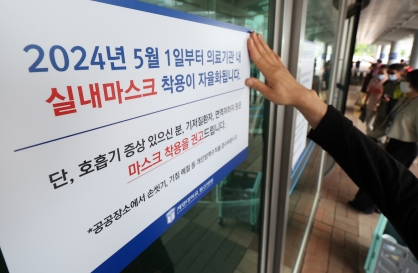Foreign workers in South Korea are concentrated in labor-intensive industries despite growing calls for a “comprehensive” immigration policy to encourage more skilled workers from abroad, according to a recent report.
The study by Hyundai Research Institute, commissioned by the Justice Ministry, suggested that the government fix its immigration system that is heavily focused on low-skilled workers and more effectively make use of foreign workers on a long-term basis in the wake of aging population and low fertility rate.
The study by Hyundai Research Institute, commissioned by the Justice Ministry, suggested that the government fix its immigration system that is heavily focused on low-skilled workers and more effectively make use of foreign workers on a long-term basis in the wake of aging population and low fertility rate.

As of end-November 2015, 92.2 percent of the 629,671 foreign workers entered Korea on low-skilled visas, according to government data, while 7.8 percent were hired in professional sectors, such as universities, research institutes, and arts and entertainment.
Thirty-four percent of those on professional visas teach conversational foreign languages, followed by 6.5 percent working in research fields and 5.4 percent teaching university students. Just 1.3 percent work in highly skilled occupations, such as lawyers and accountants.
According to a 2015 report by the think tank on 115 professional workers, the majority of them noted discrimination, lack of job opportunities for their partners, the language barrier, office culture differences and poor balance between work and family as major difficulties in living in Korea.
They called for more language training, administrative support, help with translation and interpretation to enable them to settle and work here more easily.
The report also showed that current policies on unskilled immigrant workers have been ineffective, with manufacturing, construction and hospitality sectors suffering a shortage of workers. The number of additional workers needed in the three sectors combined grew from 120,119 in 2006 to 135,688 in 2014, according to the report.
Currently, the foreign workers on unskilled visa schemes come from 15 countries mostly in South and Central Asia on the Employment Permit System or are ethnic Koreans with foreign nationality coming on the H-2 working visit visa. After the government reviews labor shortages in each industry, it sets quotas and invites a certain number of workers to allow them to work here for three years. It can be extended by one year and 10 months with their employers’ agreement.
According to a 2014 report by Korea Economic Institute, South Korea will need to receive 1.6 million immigrants by 2020 and 11.8 million by 2050 to offset the fall in the economically active population.
“The lack of low-skilled laborers at the country’s small and medium-sized manufacturers is chronically high, but the current Employment Permit System has not been effectively utilized because authorities restrict the yearly inflow of foreign workers and their distribution in each industry,” the report said.
“The policy on foreign workers should be more comprehensive so that it can maximize the use of foreign workers and reduce problems such as receiving untrained workers in large numbers and using them for a short term,” it said.
By Ock Hyun-ju (laeticia.ock@heraldcorp.com)
Thirty-four percent of those on professional visas teach conversational foreign languages, followed by 6.5 percent working in research fields and 5.4 percent teaching university students. Just 1.3 percent work in highly skilled occupations, such as lawyers and accountants.
According to a 2015 report by the think tank on 115 professional workers, the majority of them noted discrimination, lack of job opportunities for their partners, the language barrier, office culture differences and poor balance between work and family as major difficulties in living in Korea.
They called for more language training, administrative support, help with translation and interpretation to enable them to settle and work here more easily.
The report also showed that current policies on unskilled immigrant workers have been ineffective, with manufacturing, construction and hospitality sectors suffering a shortage of workers. The number of additional workers needed in the three sectors combined grew from 120,119 in 2006 to 135,688 in 2014, according to the report.
Currently, the foreign workers on unskilled visa schemes come from 15 countries mostly in South and Central Asia on the Employment Permit System or are ethnic Koreans with foreign nationality coming on the H-2 working visit visa. After the government reviews labor shortages in each industry, it sets quotas and invites a certain number of workers to allow them to work here for three years. It can be extended by one year and 10 months with their employers’ agreement.
According to a 2014 report by Korea Economic Institute, South Korea will need to receive 1.6 million immigrants by 2020 and 11.8 million by 2050 to offset the fall in the economically active population.
“The lack of low-skilled laborers at the country’s small and medium-sized manufacturers is chronically high, but the current Employment Permit System has not been effectively utilized because authorities restrict the yearly inflow of foreign workers and their distribution in each industry,” the report said.
“The policy on foreign workers should be more comprehensive so that it can maximize the use of foreign workers and reduce problems such as receiving untrained workers in large numbers and using them for a short term,” it said.
By Ock Hyun-ju (laeticia.ock@heraldcorp.com)
-
Articles by Ock Hyun-ju




![[Music in drama] Rekindle a love that slipped through your fingers](http://res.heraldm.com/phpwas/restmb_idxmake.php?idx=644&simg=/content/image/2024/05/01/20240501050484_0.jpg&u=20240501151646)

![[New faces of Assembly] Architect behind ‘audacious initiative’ believes in denuclearized North Korea](http://res.heraldm.com/phpwas/restmb_idxmake.php?idx=644&simg=/content/image/2024/05/01/20240501050627_0.jpg&u=20240502093000)


![[KH Explains] Will alternative trading platform shake up Korean stock market?](http://res.heraldm.com/phpwas/restmb_idxmake.php?idx=644&simg=/content/image/2024/05/01/20240501050557_0.jpg&u=20240501161906)









